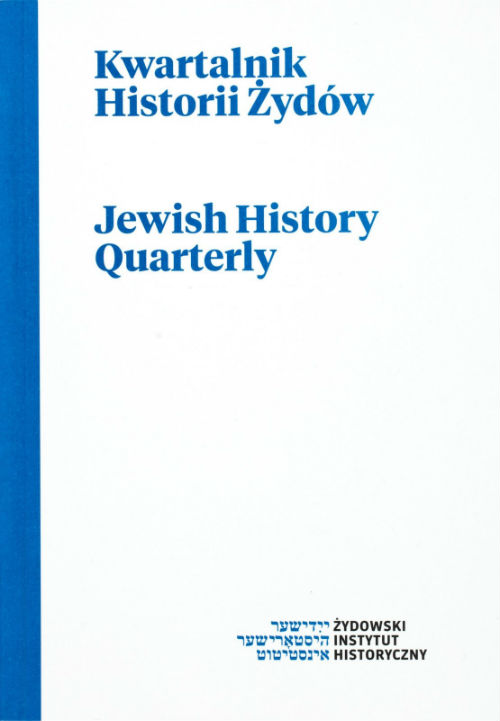Żydzi w miastach Mazowsza w świetle żródeł pruskich z końca XVIII i początku XIX wieku
Jews in Mazovia towns in light of Prussian sources from late 18th and early 19th century
Author(s): Paweł FijałkowskiSubject(s): History
Published by: Żydowski Instytut Historyczny
Keywords: Mazovia; Prussian partition zone; demographic shifts; occupational structure of Jewish population
Summary/Abstract: In the years 1793-1795 a major part of Mazovia was incorporated in the Prussian state. The authorities took several surveys, which provide ample information on the numbers and distribution of urban and rural Jewish population, its economic activity and sometimes also other areas of life. Around the end of the 18th century, urban population was growing, with the concentrations of Jews growing at a faster pace than Christian communities, which translated into a growth of the proportion of Jews in towns. The average for the Warsaw department in 1800 exceeded 18%. For some towns, their total demographic growth was owed to the Jews, and in some cased the number of Christians was actually declining. In some cities, the proportion of Jews could be as high as 80 or 90% around 1800. At the same time, the proportion of Jews living in villages fell from 29% to 24% of the total Jewish population in the first decade of the 19th century (to less than 4% of the rural population). The main source of income of the Jewish population were crafts (approx. 70%, commerce (approx. 15%), innkeeping (approx. 15%) (approx. 10%) and medicine (approx. 3 %). In large cities, the proportion of Jews working in the clothing (over 71%), textile and services sectors was higher than in small towns, while the latter had a larger proportion of Jewish craftsmen in the food, building and leather trades.
Journal: Kwartalnik Historii Żydów
- Issue Year: 215/2005
- Issue No: 03
- Page Range: 324-341
- Page Count: 18
- Language: Polish

